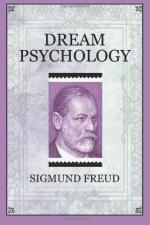When one has become familiar with the abundant use of symbolism for the representation of sexual material in dreams, one naturally raises the question whether there are not many of these symbols which appear once and for all with a firmly established significance like the signs in stenography; and one is tempted to compile a new dream-book according to the cipher method. In this connection it may be remarked that this symbolism does not belong peculiarly to the dream, but rather to unconscious thinking, particularly that of the masses, and it is to be found in greater perfection in the folklore, in the myths, legends, and manners of speech, in the proverbial sayings, and in the current witticisms of a nation than in its dreams.
The dream takes advantage of this symbolism in order to give a disguised representation to its latent thoughts. Among the symbols which are used in this manner there are of course many which regularly, or almost regularly, mean the same thing. Only it is necessary to keep in mind the curious plasticity of psychic material. Now and then a symbol in the dream content may have to be interpreted not symbolically, but according to its real meaning; at another time the dreamer, owing to a peculiar set of recollections, may create for himself the right to use anything whatever as a sexual symbol, though it is not ordinarily used in that way. Nor are the most frequently used sexual symbols unambiguous every time.
After these limitations and reservations I may call attention to the following: Emperor and Empress (King and Queen) in most cases really represent the parents of the dreamer; the dreamer himself or herself is the prince or princess. All elongated objects, sticks, tree-trunks, and umbrellas (on account of the stretching-up which might be compared to an erection! all elongated and sharp weapons, knives, daggers, and pikes, are intended to represent the male member. A frequent, not very intelligible, symbol for the same is a nail-file (on account of the rubbing and scraping?). Little cases, boxes, caskets, closets, and stoves correspond to the female part. The symbolism of lock and key has been very gracefully employed by Uhland in his song about the “Grafen Eberstein,” to make a common smutty joke. The dream of walking through a row of rooms is a brothel or harem dream. Staircases, ladders, and flights of stairs, or climbing on these, either upwards or downwards, are symbolic representations of the sexual act. Smooth walls over which one is climbing, facades of houses upon which one is letting oneself down, frequently under great anxiety, correspond to the erect human body, and probably repeat in the dream reminiscences of the upward climbing of little children on their parents or foster parents. “Smooth” walls are men. Often in a dream of anxiety one is holding on firmly to some projection from a house. Tables, set tables, and boards are women, perhaps on account of the opposition which does away with the




